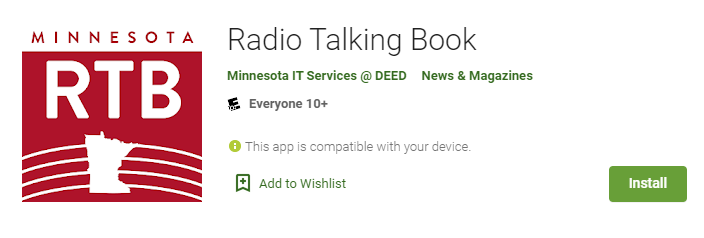Find the latest news from the Office of Accessibility. Once a month we will bring you tips, articles, and ways to learn more about digital accessibility. Want an easier way to stay informed? Subscribe to the Accessibility Newsletter!
Celebrating Digital Accessibility in the State of Minnesota
5/20/2020 11:17:02 AM

May 21 marks the 8th annual Global Accessibility Awareness Day (GAAD). As a leader in digital accessibility, the State of Minnesota participates in GAAD every year. Minnesota’s contribution to this year’s celebration will be a virtual event, “Stories of Inclusion: State Government Accessibility.”
Because not everyone can be at the May 21 event (12 p.m., CT) or wait for the recording to be posted, read on to learn just a few of the ways the State of Minnesota is ensuring full digital accessibility for citizens and employees.
The Minnesota Department of Health (MDH) created a COVID-19 webpage in January as part of the information on diseases and conditions of concern in Minnesota. Because of this virus’ immediate nature, the COVID-19 site is continuously maintained with daily updates to data and statistics. The site contains a page dedicated to providing a COVID-19 Situation Update that was planned for, created, and maintained with accessibility for all Minnesotans in mind.
Before newspapers were available online, many people with disabilities would “read” local newspapers (including store discount coupons) by using a specialized radio receiver tuned to their local Radio Reading Service station.
Even with the prevalence of online news, such services remain popular. Each region’s Reading Service, called the Radio Talking Book (RTB) in Minnesota offers news and other information to allow multiple generations of blind and low vision and other print-disabled listeners to connect to their communities. However, the radios themselves have become outdated. The Department of Employment and Economic Development’s State Services for the Blind (SSB) recently launched an app that performs all the functions of the old radios, and more. The apps are available on Google’s Play Store, Apple’s App Store, and as an Alexa smart speaker skill. Users can also access the services on SSB’s website.
The Minnesota’s Radio Talking Book app and website enable any qualified user to access the service.

The Minnesota Department of Revenue (DOR) develops a wide variety of computer-based training (CBT) for its staff as well as the general public. For example, DOR provides training for certification programs such as the Property Tax Calculation exam, as well as information for state employees on how to handle Power of Attorney forms.
A common challenge of e-learning design and development is how to enable a high level of interaction and engagement at a reasonable cost. Making interactive elements accessible is an added challenge. For example, a common method of encouraging user interaction was to have the user “drag and drop” an element to demonstrate understanding. However, most techniques for this interaction are not accessible to all users, as it requires the use of a mouse, preventing some assistive technology and other keyboard-only users from effectively completing the task.
The DOR developed a “CBT accessibility training” program for its e-learning designers and developers. The training teaches, among other topics:
DOR’s Employee Development Services maintains a template that gets updated as new issues arise. The template includes items such as:
All of the interviews will be captioned and posted on the /mnit/about-mnit/accessibility/index.jspOffice of Accessibility section.
Would you like to learn more about the accessibility work being done by Minnesota IT Services and the State of Minnesota? Once a month we will bring you more tips, articles, and ways to learn more about digital accessibility.
Accessibility